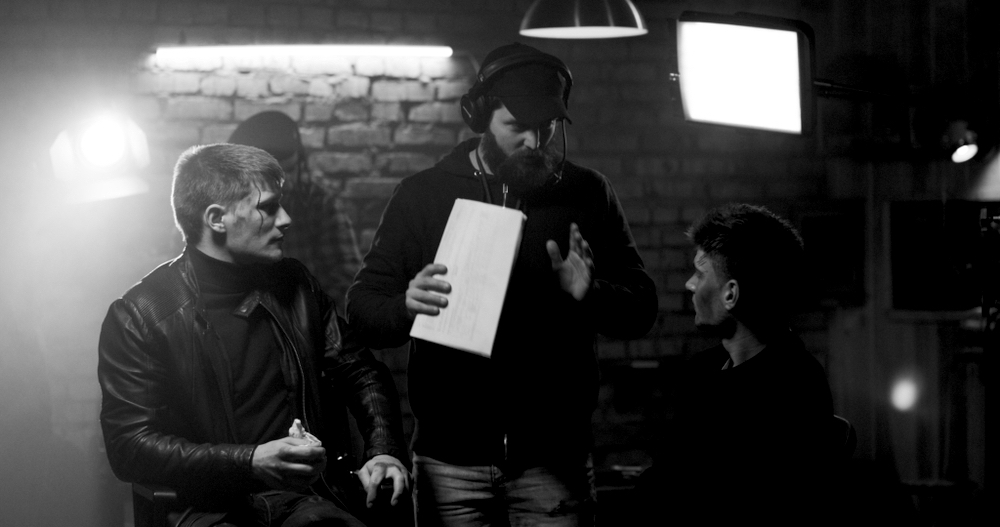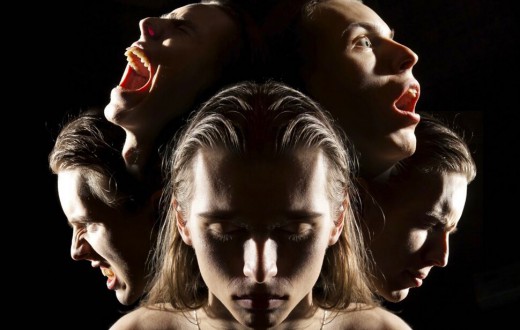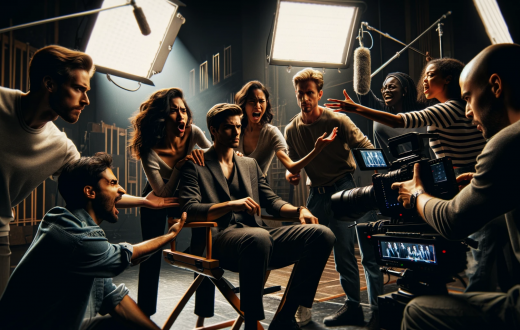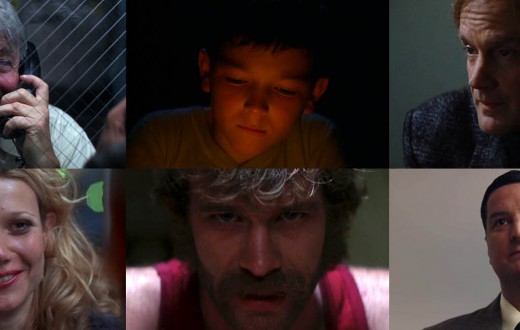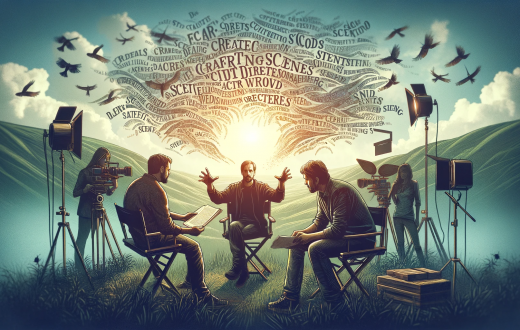In the world of filmmaking, the creation of a perfect scene is a dance of collaboration and creativity between the actor and the director. It’s not merely about reciting lines or following cues; it’s about engaging in a profound dialogue that shapes the heart of the cinematic experience. As an actor, your role extends beyond embodying a character; you’re a pivotal contributor to a larger narrative, a co-creator in the art of storytelling.
The interplay between you and the director is crucial, a delicate balance of give and take that forms the bedrock of every memorable scene. This partnership is about exchanging ideas, fine-tuning emotions, and synchronizing your performance with the director’s vision. The discussions you have will guide your understanding of the character, influence the emotional depth of your performance, and ensure your movements resonate with the camera’s choreography.
These dialogues are not just instructional; they are transformative. They offer a space for your artistic expression to flourish, where your perspectives are explored, and your input is integral to the narrative’s evolution. Engaging actively in these conversations allows you to sharpen your craft, align your performance with the film’s ethos, and contribute to the unfolding story in meaningful ways.
As you delve into your role, embrace this dynamic exchange as the core of your artistic journey in filmmaking. It’s in these moments of collaboration that the magic of cinema comes alive, where individual talents converge to create scenes that linger in audiences’ memories. This actor-director dialogue isn’t just a facet of the filmmaking process; it’s the essence of crafting compelling, authentic, and impactful cinema.
When directors and actors collaborate on a film set, their discussions are crucial for shaping the performance and the overall production. Here are several key topics they might discuss:
- Character Development: This involves exploring the character’s history, personality traits, and evolution throughout the story. Directors and actors discuss the character’s motivations, how they respond to various situations, and their relationships with other characters. This deep dive helps the actor internalize the character, ensuring their portrayal is nuanced and consistent.
- Scene Objectives: Every scene has a purpose in the larger narrative. Directors and actors discuss what the character is trying to achieve in each scene, whether it’s to convey a specific emotion, advance the plot, or develop a relationship. Understanding the scene’s objective helps the actor focus their performance to serve the story effectively.
- Blocking and Movement: This is about the physical positioning and movement of actors within the scene. Directors work with actors to plan where they should be at certain points during the scene, how they should move to interact with other characters or objects, and how this movement complements the camera’s movement. This choreography is essential for maintaining visual coherence and enhancing the scene’s impact.
- Tone and Pace: The emotional tone and rhythm of a scene influence how it is perceived by the audience. Directors and actors discuss the intended tone, whether it’s tense, comedic, somber, etc., and adjust the pacing of dialogue and action to match. This ensures the scene effectively communicates its intended mood and energy.
- Dialogue: While actors often stick to the script, there might be moments where they or the directors feel a line could be improved or made more natural. They discuss potential changes to the dialogue, ensuring that any adjustments still align with the character’s voice and the script’s intent. They also explore the subtext behind the lines, which adds depth to the performance.
- Reactions and Interactions: Not all acting is about speaking; much is conveyed through reactions and non-verbal cues. Actors and directors discuss how characters should react to each other or to specific events, ensuring these reactions are authentic and contribute to the storytelling. This includes facial expressions, body language, and timing.
- Improvisation: Sometimes, to capture a more authentic or spontaneous moment, directors allow actors to improvise. Before doing so, they discuss the scene’s objectives and boundaries to ensure the improvisation remains consistent with the character and story.
- Feedback and Adjustments: After a take, directors often provide feedback on the performance. This might include praise for what worked well or suggestions for adjustments. The goal is to refine the performance, making it as effective and impactful as possible. This iterative process is crucial for achieving the director’s vision.
- Technical Aspects: Actors need to be aware of various technical elements, like camera angles, lighting, and microphone placement. Directors and actors discuss how these technical elements affect the performance and how the actor can best work with them to enhance the scene’s visual and auditory impact.
- Safety and Comfort: Particularly in scenes that are physically demanding, emotionally charged, or involve intimacy, it’s crucial that actors feel safe and comfortable. Directors and actors discuss boundaries, consent, and any protective measures in place, ensuring that the set is a respectful and supportive environment for everyone involved.
These conversations are integral to the collaborative process on set, enabling directors and actors to align their visions and bring the script to life with authenticity and creativity.

